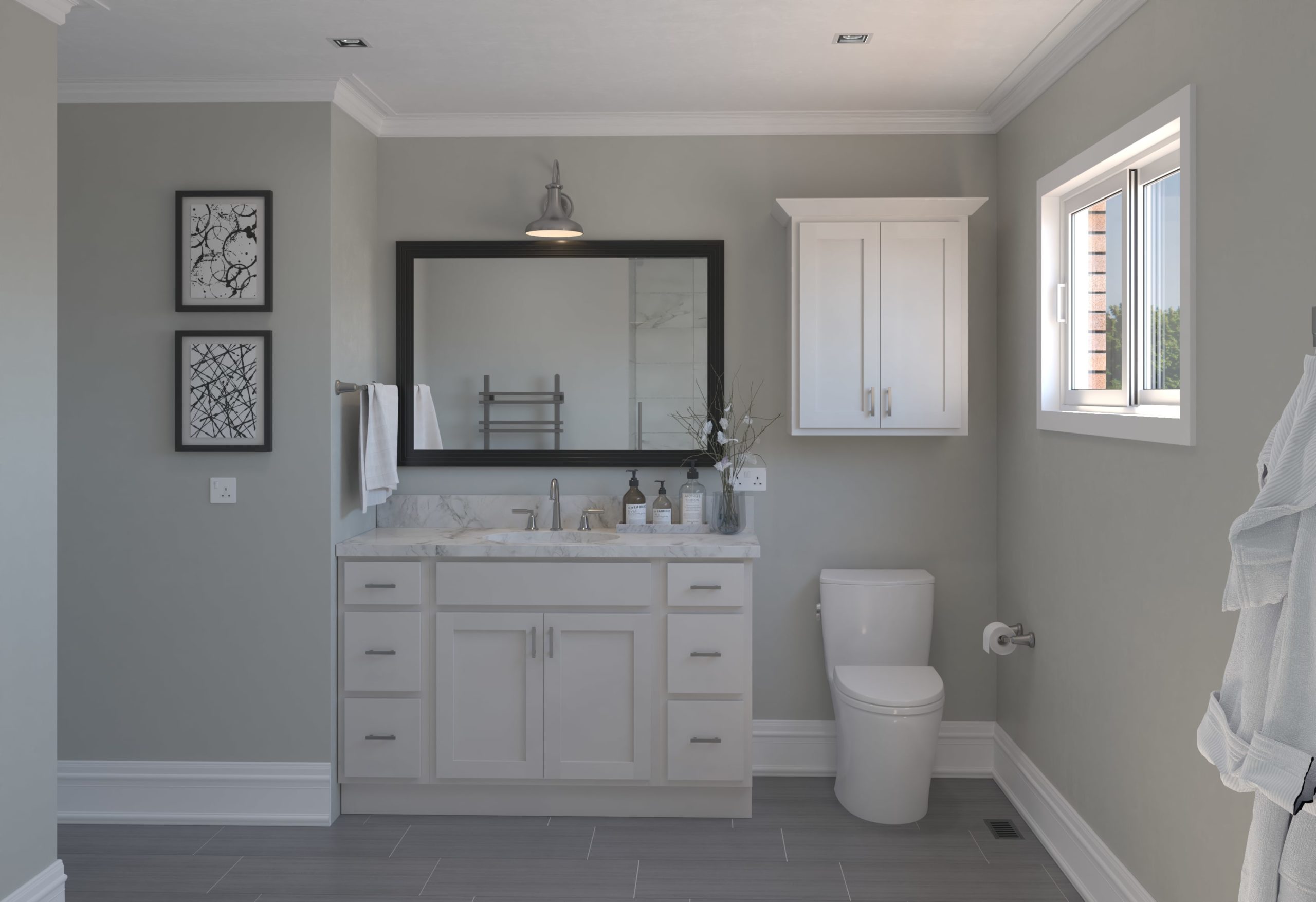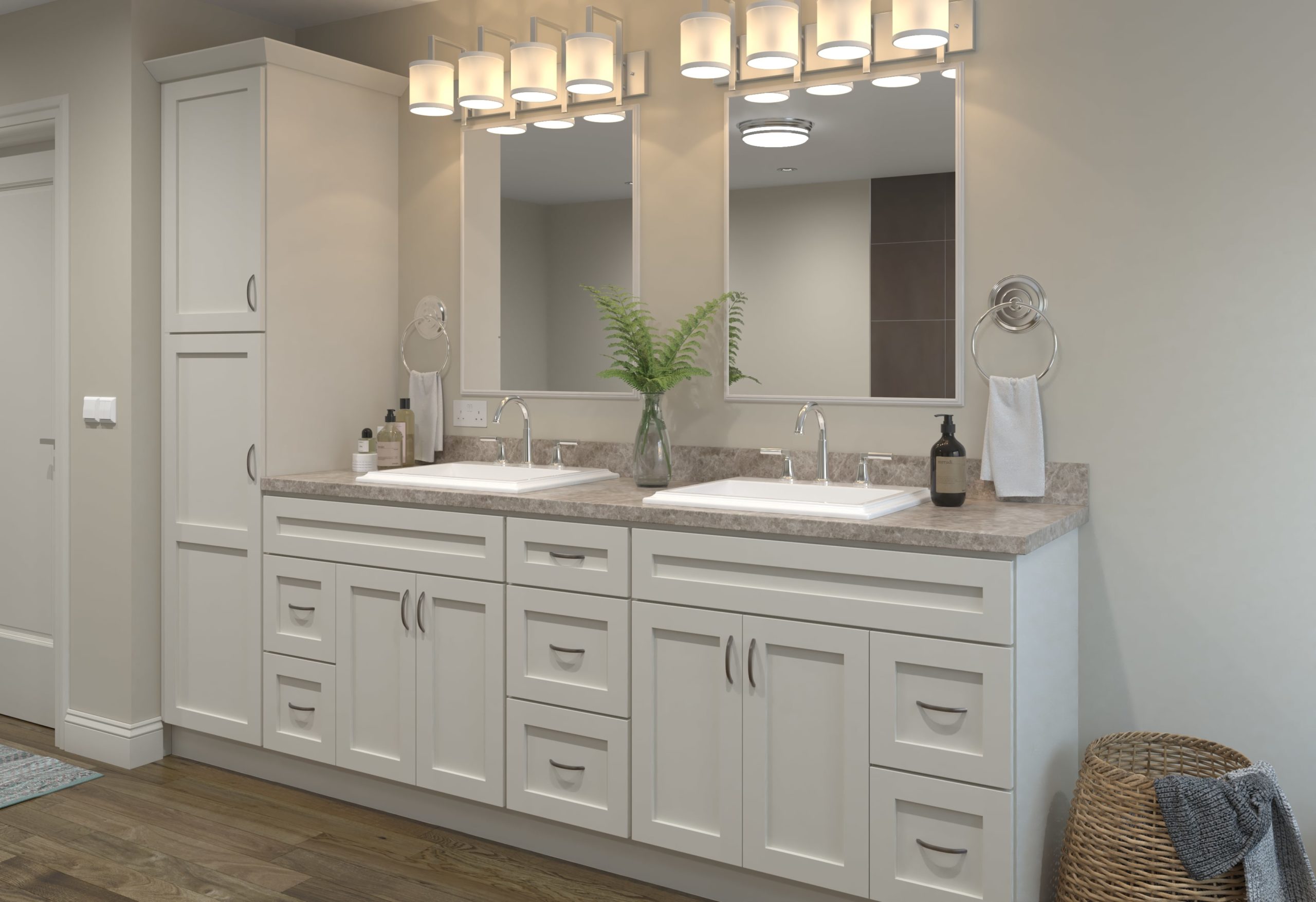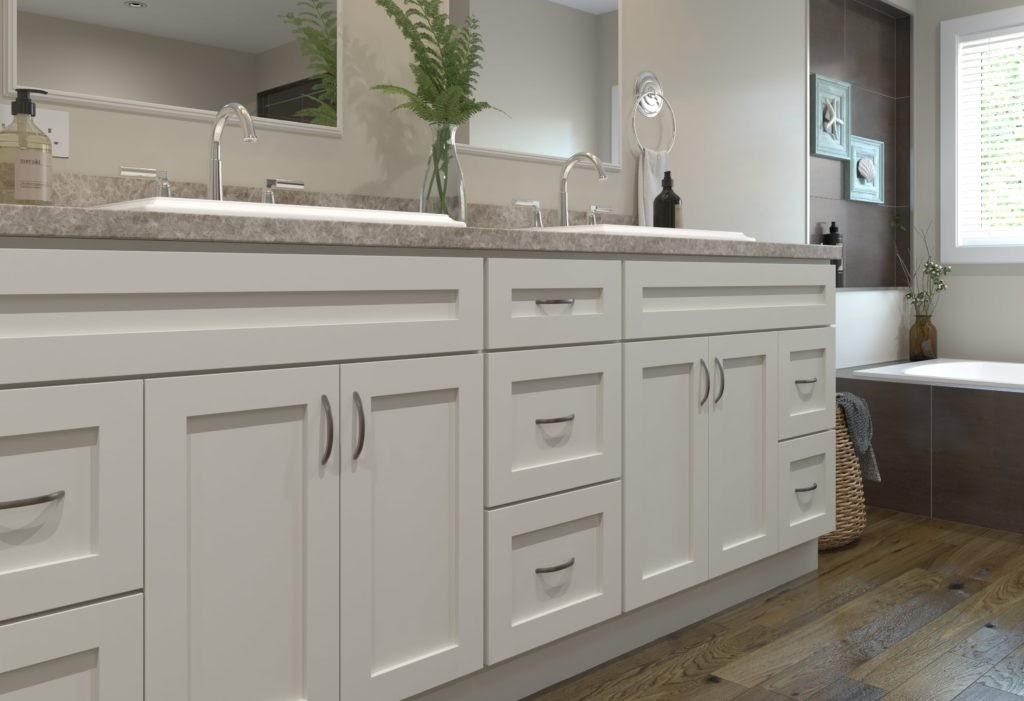The bathroom vanity is a crucial piece of furniture that significantly impacts how your bathroom looks and feels. It is a decorative and practical focal point, offering storage space and reflecting your style. Choosing the best bathroom vanity designs can be daunting. However, this article will guide you through the process.
From traditional to modern bathroom vanity, budget-friendly to luxurious, we’ll look at the many types of vanities available. Also, we’ll go over factors to consider when choosing the right vanity. Whether you’re remodeling your bathroom or replacing your vanity countertop, this guide will help you make an informed decision.

Steps To Choosing A Bathroom Vanity For Your Space
The following are tips to help you choose the right bathroom vanity style.
Note that you need to consider these factors for vanities in the main bathrooms. But if you’re remodeling a guest bathroom or powder room, you may be more creative without stressing its functionality.
1. Plan Your Space

The first step in selecting the proper size vanity is to measure the size of your bathroom. Look in your bathroom and measure where you’d like to install the vanities – the bathroom’s width, depth, and height. Determine if it will fit a single or double vanity or even freestanding bathroom vanities.
You have to pick a vanity that won’t take up too much space if you have a small bathroom. A pedestal sink or a wall-mounted vanity are good choices for small bathrooms with little floor space. A narrow or corner vanity is also a great option since they may fit into small spaces and still offer good storage.
See also: What is the Difference Between Kitchen and Bathroom Cabinets
2. Identify Your Style

How do you want your space to look after adding these vanities? Do you want it to look traditional or modern? Your sense of style should guide your vanity choice because most vanities are made to fit specific home styles.
- Contemporary: The contemporary design features lean lines, a simple aesthetic, and a focus on functionality. It goes well with contemporary vanities like a solid surface countertop, simple hardware, and a monochrome color palette.
- Modern: Like contemporary, modern bathroom design focuses more on design and aesthetics. A contemporary vanity could have extra features like curved edges, glass, or metal components. The floating vanity is popular in modern bathrooms, and it adds a layer of sleekness and sophistication.
- Transitional: A transitional bathroom design is a blend of traditional and contemporary features to provide a timeless appearance. Choose a vanity with classic details like beadboard or raised paneling. However, it may include a modern twist like a clean-lined countertop or modern hardware.
- Farmhouse: A few qualities of the farmhouse vanity are cozy, rustic, natural, and simple. The right vanities for this style often have aged finishes or distressed wood. It also includes other rustic components, such as a trough sink or antique hardware.
3. Choose Your Vanity Sink Style
After determining your bathroom preference, consider whether you’ll need a single or double sink. Calculate how much counter space you need because the sink will take from it. Although some vanities come with sinks and countertops, you will need to choose the type of sink that best meets the demands of the bathroom if you’re buying a bathroom vanity without a sink. Your style of sink can impact the vanity’s overall design, visual appeal, and practicality.
Sink designs include under mount, vessel, drop-in, wall-mounted sinks, etc. Although vessel sinks and under-mount sinks for bathroom vanities are among the most popular choices, each has a distinct appearance. Note that your vanity needs to fit into the current layout of your bathroom. So when choosing your bathroom vanity sink, you also need to consider the nearby facilities like toilets, showers, bathtubs, and doors.
4. Determine The Right Vanity Size
Vanity size is one of the tips for choosing a vanity since it may help you narrow down the search for a perfect vanity. Single and double vanities are the two most popular sizes for bathroom vanities.
- Single Vanity: The size of single vanities in width from 36 to 48 inches. At the same time, its standard height is between 32 and 39 inches. Hence, they are an excellent choice for guest bathrooms and powder rooms. If you have a smaller bathroom, wall-mounted vanities will leave enough room in your bathroom for a nice traffic flow. But keep in mind that children sometimes need a shorter vanity.
- Double Vanity: Use double vanities if you have additional bathroom space. The length of a double vanity may range from 60 to 72 inches. Double vanities are ideal for master bathrooms or shared bathrooms when numerous individuals must utilize the area at the same time.
See also: What Color Cabinets Go With Gray Walls?
5. Select A Color
Everyone knows that color choices affect mood and represent your style, whether high-gloss white or dark, rustic brown. Another thing to consider when buying a bathroom vanity is how the color fits the overall design and the mood.
White is the most preferred color for bathroom vanities because it is simple, timeless, and adaptable. But if you want something unique, find a vanity with blue, brown/espresso, black, green, or gray colors. Brown may give your bathroom a cozy, welcoming feel, while blue is ideal for creating a peaceful ambiance. The colors gray or green are perfect if you want to make a dramatic statement.
6. Choose The Perfect Vanity Material
Bathrooms are very demanding when it comes to furniture material choices. You cannot have a vanity built with substandard materials, or you will end up spending so much on repairs and maintenance than you plan to.
It is crucial to always choose materials that are built to stand the heat and moisture in the bathroom without being a breeding spot for mold. The best material to choose for your vanities is solid wood. You can choose from the many solid wood options like oak, maple, mahogany, walnut, birch, hickory, and more.
7. Vanity Design And Build
There are so many moving parts to consider before you can say that your vanity is perfect. You need to be sure the furniture is built to provide maximum functionality and durability. Some features to look out for are soft-close doors and dovetail drawers, concealed hinges, wooden base material, solid wood joinery, accessories and storage, and cabinet beautification hardware.
8. Include Final Touches
Here, we refer to the little details that can enhance the appearance and functionality of your vanity countertops. These details may make your bathroom look timeless and attractive.
Regardless of your bathroom style, make sure the vanity top has proper lighting. Consider adding lighting fixtures to your bathroom vanity. Or install sconces on either side of the mirror. Use two sconces in a powder room and three or four in a master bathroom or guest bathroom with two sinks.
For a big master or guest bathroom, one lamp over the tub and shower and one over the toilet should provide sufficient lighting. Finally, add accessories like a soap dispenser, toothbrush holder, or towel bar to your bathroom vanity.
Final Thoughts
Whether you need to purchase a bathroom vanity, cabinet, or decorative furnishings, you’ll find it here at Choice Cabinet. We invite you to visit our Cleveland, Ohio showroom or locate an Authorized Choice Cabinet Dealer near you.
For questions and inquiries about our bathroom vanities, cabinet line, free shipping policies, and more, contact the design experts at Choice Cabinet via a call or e-mail today. Let’s transform your bathroom into an oasis of relaxation!





